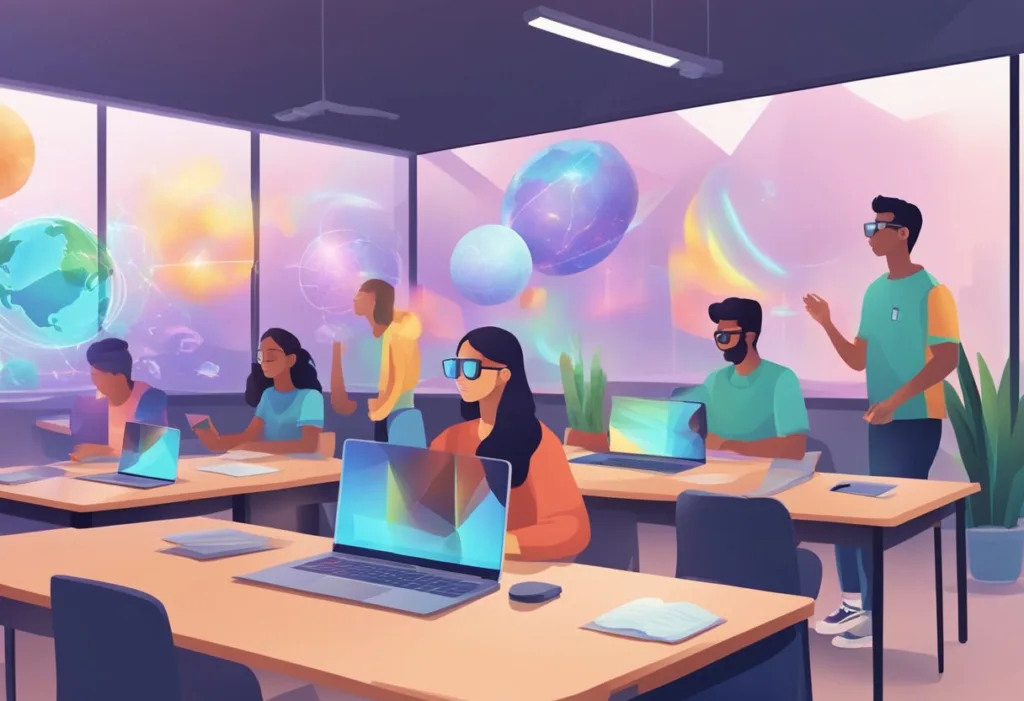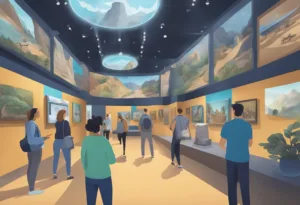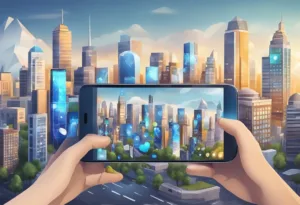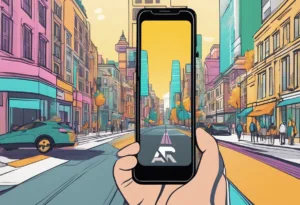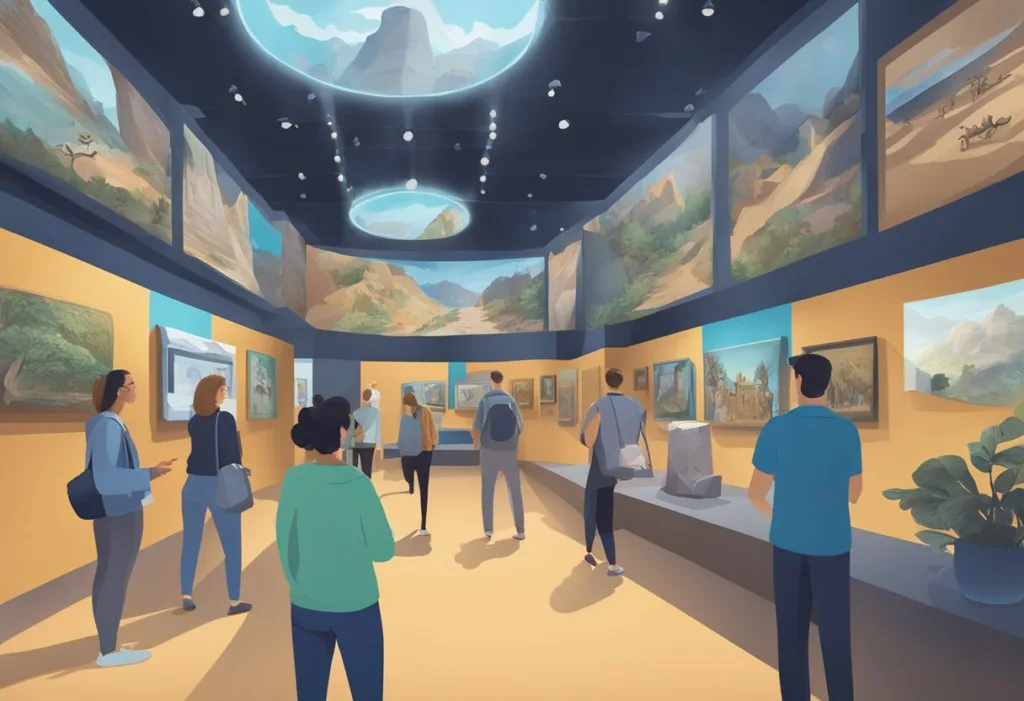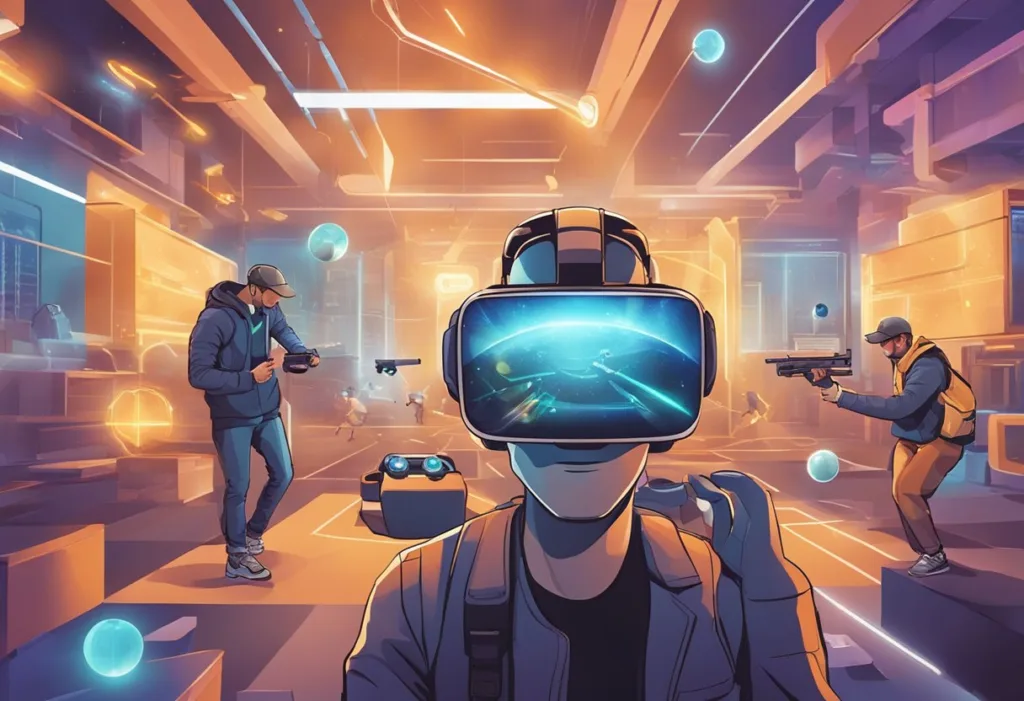Augmented Reality (AR) is a technology that overlays digital information onto the physical world. AR technology has the potential to revolutionize the way we learn and teach. AR technology can create an immersive and interactive learning experience that can be customized to meet the needs of individual learners. In this aritcle, I will discuss the Future of Augmented Reality in education and how AR will shape the future of learning.
The future of AR in education is promising. AR technology can help students visualize complex concepts in science, engineering, and mathematics. AR can also be used to create interactive simulations that can help students learn about historical events, biology, and geography. AR technology can also be used to create interactive textbooks that can help students learn at their own pace and in their own way.
Key Takeaways
- AR has the potential to revolutionize the way we learn and teach.
- AR technology can create an immersive and interactive learning experience that can be customized to meet the needs of individual learners.
- AR technology can help students visualize complex concepts in science, engineering, and mathematics.
Historical Perspective
Augmented Reality (AR) has been around for decades, but its use in educational systems has only recently gained traction. In the past, AR was mainly used for entertainment purposes, such as gaming and advertising. However, as technology has advanced, researchers and educators have started to explore the potential of AR in education.
Current Implementations
Currently, AR is being used in various educational settings, from K-12 to higher education. AR technology is being used to enhance the learning experience and make difficult subjects more accessible. For example, AR can be used to create interactive learning experiences, such as virtual field trips and lab simulations. AR can also be used to provide students with visual aids and real-time feedback, which can improve their understanding of complex concepts.
Future of Augmented Reality in Education
The future of AR in education is promising. Emerging technologies such as AR, Virtual Reality (VR), and Mixed Reality (MR) are expected to revolutionize the way we learn and teach. According to recent analysis, the global AR in education market is expected to grow at a CAGR of 82.25% during the period 2021-2028.
In higher education, AR is expected to play a significant role in the development of new teaching and learning methodologies. AR can be used to create immersive learning experiences that engage students and improve their retention of information. AR can also be used to provide students with real-world experience, such as virtual internships and job simulations.
The use of AR in education is an emerging trend that has the potential to revolutionize the way we learn and teach. As technology continues to advance, we can expect to see more innovative implementations of AR in educational systems.
Technological Foundations of AR in Education
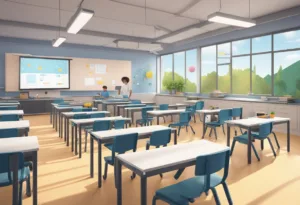
Augmented Reality (AR) is a technology that overlays digital information on top of the real-world environment. AR technology has revolutionized the education industry, providing an immersive learning experience for students. In this section, we will discuss the hardware and software requirements and AR platforms and tools that are necessary for the implementation of AR in education.
Hardware and Software Requirements
The hARdware and software requirements for AR in education vary depending on the type of AR application. For instance, for marker-based AR, you need a camera-enabled device such as a smartphone, tablet, or computer. On the other hand, for markerless AR, you need a device with GPS, compass, and accelerometer sensors.
AR applications require powerful processors and graphics capabilities to render 3D models and animations. Therefore, the device should have a high-end processor, dedicated graphics card, and enough memory to handle the AR applications.
AR Platforms and Tools
AR platforms and tools are essential for creating, developing, and deploying AR applications in education. There are several AR platforms and tools available that provide an easy-to-use interface for creating AR content. Some of the popular AR platforms and tools include:
- Unity: Unity is a cross-platform game engine that is widely used for creating AR applications. It provides a powerful development environment for creating 3D models, animations, and interactions.
- Vuforia: Vuforia is an AR platform that provides image recognition and tracking capabilities. It is widely used for creating marker-based AR applications.
- ARToolKit: ARToolKit is an open-source AR platform that provides image recognition and tracking capabilities. It is widely used for creating marker-based AR applications.
- ARCore: ARCore is an AR platform developed by Google that provides markerless AR capabilities. It uses the device’s sensors to track the real-world environment and overlay digital information on top of it.
The hardware and software requirements and AR platforms and tools are essential for the implementation of AR in education. With the right hardware and software, and the use of AR platforms and tools, educators can create immersive learning experiences that enhance student engagement and understanding.
Pedagogical Impact of AR on Learning
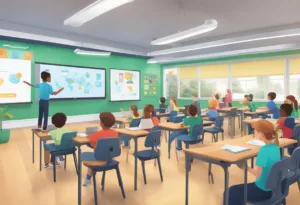
Augmented Reality (AR) has a significant impact on the pedagogical approach to learning. It offers a unique and interactive environment that enhances student engagement and improves learning outcomes. AR provides a hands-on learning experience, which is critical for long-term memory retention.
Enhancing Student Engagement
AR technology provides an interactive environment that enhances student engagement. It allows students to interact with educational content in a way that is not possible with traditional teaching methods. AR technology enables teachers to create an immersive learning environment that stimulates critical thinking and collaboration among students.
Improving Learning Outcomes
AR technology has been shown to improve learning outcomes. The use of AR in education has been linked to increased student motivation and critical thinking. Students are more likely to retain information when they are engaged in hands-on learning experiences. AR technology provides an opportunity for students to explore and interact with educational content in a way that is not possible with traditional teaching methods.
AR technology also provides a more personalized learning experience. Teachers can create customized learning experiences that cater to the needs of individual students. This approach to learning has been shown to be more effective than traditional teaching methods.
The pedagogical impact of AR on learning is significant. It offers a unique and interactive environment that enhances student engagement and improves learning outcomes. AR technology provides a hands-on learning experience that is critical for long-term memory retention. It stimulates critical thinking and collaboration among students, which is essential for the development of 21st-century skills.
Practical Applications of AR in Education
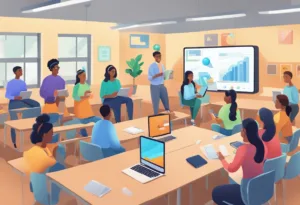
Augmented Reality (AR) is a technology that has the potential to revolutionize education by enhancing the learning experience. AR provides students with a more immersive and interactive way of learning, making it easier for them to understand complex concepts. In this section, we will explore some of the practical applications of AR in education.
AR in Science and Engineering Education
AR has significant potential in science and engineering education. For example, AR can be used to teach chemistry and biology by overlaying virtual models of molecules and cells onto real-world objects. This approach can help students visualize complex structures and better understand how they work. AR can also be used to teach engineering by allowing students to design and test virtual prototypes of machines and structures.
AR in Humanities and Arts
AR can also be used in humanities and arts education. For example, AR can be used to bring historical sites and artifacts to life, allowing students to explore them in a more immersive way. AR can also be used to create interactive art installations that respond to the viewer’s movements and actions.
Vocational Training and AR
AR can also be used for vocational training, such as medical procedures and manufacturing. For example, AR can be used to simulate medical procedures, allowing students to practice and refine their skills in a safe and controlled environment. AR can also be used to train workers in manufacturing by overlaying virtual instructions onto real-world machines.
AR has the potential to transform education by providing students with a more immersive and interactive way of learning. AR can be used in a variety of subjects, from science and engineering to humanities and arts, and can also be used for vocational training. With the continued development of AR technology, we can expect to see even more innovative applications in the future.
Challenges and Considerations
Privacy and Ethical Concerns
Augmented Reality (AR) has the potential to collect a vast amount of data on students, including their movements, interactions, and personal information. As such, privacy and ethical concerns are some of the most significant challenges facing AR in education. As an educator, you need to ensure that the AR technology you use is compliant with privacy laws and regulations. You should also ensure that students are aware of the data that is being collected and how it is being used.
Accessibility and Affordability
Another challenge facing AR in education is accessibility and affordability. While AR technology has the potential to revolutionize education, it is currently only available to a limited number of students. This is because AR technology can be expensive, and not all schools and students can afford it. As an educator, you need to consider the accessibility and affordability of the AR technology you use. You should also consider how you can make AR technology available to all students, regardless of their financial situation.
To address these challenges, emerging technologies such as mobile applications and platforms have been developed to increase students’ immersive digital experiences. Content understanding and sector value have also been considered to ensure that AR technology is used effectively in education.
Frequently Asked Questions
How is augmented reality transforming teaching methods?
Augmented reality is revolutionizing the way educators teach by providing an interactive, immersive learning experience. With AR, students can visualize complex concepts and ideas in a way that was not possible before. Educators can use AR to create engaging and interactive lessons that capture students’ attention and increase their participation in the learning process.
What are the proven benefits of augmented reality for students?
Studies have shown that augmented reality can improve students’ retention of information, increase their motivation to learn, and enhance their critical thinking skills. AR can also help students with special needs to better understand and engage with the material. AR can provide a more inclusive learning environment by allowing students to learn at their own pace and in their own way.
What challenges do educators face when integrating augmented reality into curricula?
One of the main challenges educators face when integrating AR into curricula is the lack of resources and training available. Educators need to be trained in the use of AR technology and need access to the necessary tools and equipment. There may be resistance from students who are not familiar with AR technology or who are hesitant to try something new.
How can augmented reality be utilized to enhance distance learning experiences?
AR can be used to create a more immersive and engaging distance learning experience. Educators can use AR to provide students with virtual field trips, interactive simulations, and collaborative learning experiences. AR can also help students to better understand and visualize complex concepts and ideas.
What are the potential long-term impacts of augmented reality on educational outcomes?
The potential long-term impacts of AR on educational outcomes are significant. AR has the potential to improve student engagement, motivation, and retention of information. It can also help to create a more inclusive learning environment and provide students with new opportunities to learn and explore.
What skills are required for educators to effectively implement augmented reality in their classrooms?
Educators need to have a basic understanding of AR technology and how it can be used to enhance the learning experience. They also need to be able to create engaging and interactive lessons using AR technology. Educators need to be able to manage and troubleshoot any technical issues that may arise during the use of AR technology in the classroom.

